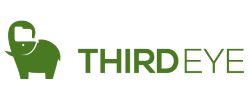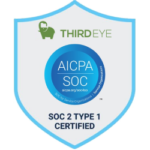The Single Pane of Glass: How ThirdEye Datais Unlocking the Future of AI with Microsoft Fabric’s Unified Architecture
Hey Data Fam!
Let’s be real. If you’re a Data Engineer, a Data Scientist, or a BI Analyst in the enterprise world, your life is probably a masterclass in platform juggling. You’ve got your data lake over here, your data warehouse over there, ETL pipelines duct-taped between five different services, and your BI dashboards running on data that’s already a few hours (or days!) old.
It’s a hot mess. It is expensive. And, frankly, it’s the biggest bottleneck to actually deliver the game-changing AI solutions we know are possible.
But what if I told you there’s a tectonic shift happening? A move towards a unified platform that cuts through complexity and lets us focus on the insight, not the plumbing.
Here at ThirdEye, we’re not just watching this shift—we’re pioneering solutions on it. We’re talking about Microsoft Fabric, and trust me, it’s not just “another Microsoft tool.” It’s the cohesive, SaaS-based data platform that’s giving our clients a true competitive edge, especially when paired with our deep AI and Machine Learning expertise.

The Architecture That Kills Complexity: OneLake and Direct Lake
The brilliance of Microsoft Fabric isn’t in one single component; it’s in the unified experience built on two foundational concepts: OneLakeand Direct Lake.
- OneLake: The OneDrive for Data
Think of OneLakeas a single, logical data lake for your entire organization. No more data silos. No more copying massive datasets between your Data Engineering environment (Spark/Synapse) and your Data Warehouse (SQL Endpoint).
Traditional ETL Flow:
- Source Copy → Lake Transform → Warehouse Copy → BI Model
With Fabric (and ThirdEye’s implementation):All data—structured, unstructured, streaming—lives in one place, stored in the open-source Delta Lakeformat. Every workload (Data Engineering, Data Science, Real-Time Analytics) simply points to the same single copy of data in OneLake. It’s the ultimate source of truth, eliminating redundant storage and catastrophic data drift.
- Direct Lake: BI at the Speed of Flash
This is the real game-changer for business users. Historically, a Power BI report required importing data (slow, memory-intensive) or using DirectQuery (real-time, but slow query performance).
Direct Lakeis the beautiful middle ground. It allows Power BI to read the Delta Lake files in OneLake natively, bypassing the need to copy the data or query a traditional SQL endpoint.
Direct Lake Power BI Access:
- Power BI Direct Read → OneLake (Delta Files)
The Technical Win:Near real-time data access for your dashboards with the performance of in-memory (Import mode).
The Human Win:Business decisions are made on fresh data, accelerating the feedback loop from insight to action.
The Data Platform Showdown: Fabric vs. The Titans
Okay, so the hype is real, but a true engineer knows there are always alternatives. Fabric didn’t invent the Lakehouse; it simply integrated it perfectly. So, how does it stack up against the cloud data world’s heavyweights?
Fabric: Pros, Cons, and the Competitive Edge
| Metric | Microsoft Fabric | The ThirdEye View |
| PROS (Why We Love It) | Unified SaaS Model:Single billing, one security/governance layer (Purview built-in), and zero infrastructure management. | Less platform plumbing for us, lower TCO for you. We focus on the AI model, not the VM patch. |
| Direct Lake Technology:Instantaneous BI on your lakehouse data. | This is the killer app. Near real-time dashboards without ETL latency. Speed wins. | |
| Deep Microsoft Ecosystem Tie-in:Seamless integration with Power BI, Teams, and Azure AI services. | If you’re a Microsoft shop, the adoption is instant and the learning curve is minimal. | |
| CONS (Where We Compensate) | BI-First DNA:The platform’s strongest components are BI and data integration, with Data Science/ML tooling being an evolving, secondary focus compared to competitors. | We augment Fabric’s ML features with specialized Azure ML integration where necessary, ensuring a full MLOps lifecycle is still achieved. |
| Capacity-Based Pricing:The F-SKU capacity model (reserved compute) requires careful monitoring and automation to prevent underutilized resources from incurring high costs. | Our deployment strategy includes Pause/Resume automationbuilt into the CI/CD pipeline, aligning your compute spend with your actualutilization schedule. |
The Alternatives: Databricks and Snowflake
| Alternative Platform | Primary Strength & Sweet Spot | When ThirdEye Data Might Recommend It |
| Databricks | Openness & Deep AI/ML:Pioneers of the Lakehouse, best-in-class MLOps (MLflow, Feature Store), heavy reliance on Apache Spark. | For organizations that are code-first, need the absolute cutting edge in GPU-intensive AI training, or have a strict multi-cloud mandate. |
| Snowflake | Elastic Data Warehouse:SQL-centric, simple governance, incredible performance on structured SQL workloads. | For teams prioritizing SQL Analystsand secure data sharingwith external parties, where the data science use case is secondary. |
Why Fabric Wins for the Enterprise
The truth is, all three platforms are great. But in our experience delivering enterprise-grade AI solutions, Fabric is the productivity accelerator.
Fabric eliminates the friction between the three main data personas—the Data Engineer, the Data Scientist, and the Business Analyst—by giving them a different-looking workspace that all points to the same OneLake.
ThirdEye’s Superpower:We’re platform-agnostic, but we advocate for the tool that delivers the fastest, most predictable ROI. Fabric’s SaaS model and unified architecture cut down project deployment time by up to 40%, meaning our AI models start generating business value for you sooner.
Technical FAQ: An Architect’s Due Diligence
The shift to a unified platform always raises critical questions about governance, security, and integration.
Question | ThirdEye Data’s View |
| Q: Is OneLake a proprietary format? Does it cause vendor lock-in? | A:No. OneLake’s fundamental storage format is Delta Lake(open-source), with files stored as Parquet. This open standard ensures your data is externally accessible by any tool (like Databricks or pure Spark) that can read Delta/Parquet, mitigating lock-in risk. |
| Q: How is data governance and security handled across all the different workloads? | A:Governance is centralized via Microsoft Purview(built-in). Permissions, sensitivity labels, and data lineage are automatically propagated across all workloads (Lakehouse, Warehouse, Power BI). You define access once in the workspace/item, and it applies everywhere, including Row-Level Security (RLS) and Column-Level Security (CLS). |
| Q: How does the Direct Lake RLS/CLS actually work in Power BI? | A:With Direct Lake, the semantic model passes the end-user’s credentials to the underlying SQL Endpoint/Lakehouse. The RLS/CLS rules you define on the tablesin the Data Warehouse or Lakehouse SQL Endpoint are enforced directly on the Delta files by the Fabric engine before the data ever hits the Power BI model. |
| Q: Our organization is heavily invested in Git for CI/CD. How does Fabric support DevOps? | A:Fabric provides native integration with Azure DevOpsand GitHub. This allows Data Engineers and Scientists to version control their Notebooks, Pipelines, and Dataflows, promoting artifacts through Dev → Test → Production environments using Deployment Pipelines. |
| Q: What is the cost model compared to a pure pay-as-you-go service like Snowflake? | A:Fabric uses a Capacity Unit (CU)-based model (F-SKUs), which is a reserved pool of compute power for a fixed price (pay-as-you-go or reserved). While this offers a predictable cost ceiling, it requires active capacity management (pause/resume automation) to ensure you are not paying for idle compute, which we implement by default. |
Final Takeaway: Microsoft Fabric
Microsoft Fabric is a transformative, unified, and AI-powered data platform that is essential for enterprises looking to fully embrace the era of Generative AI and achieve digital transformation.
The core value proposition is the elimination of data silos and complexity, enabling faster, more confident, and more democratized insights across the entire organization.
Key Takeaways:
- Unification is the new Standard:Fabric unifies the entire data and analytics stack (Data Engineering, Data Warehousing, Data Science, Real-Time Analytics, and Business Intelligence) into a single SaaS product built around one logical data lake, OneLake. This significantly reduces data duplication, integration effort, cost, and time-to-insight.
- AI is Built-In, Not Bolted On:The platform is designed from the ground up to be AI-ready, with Copilotinfused into every layer. This empowers all data professionals—from data engineers to business users—to leverage AI for everything from writing code to generating reports and developing machine learning models using natural language.
- Democratization and Efficiency:By simplifying the architecture and providing intuitive, role-specific tools, Fabric empowers a much broader set of users (the “data culture”) to work with data securely. This accelerates project delivery, improves collaboration, and drives a strong Return on Investment (ROI)by increasing productivity and operational efficiency.
- Governance and Security are Central:With deep integration of Microsoft Purview, Fabric ensures enterprise-grade data governance, lineage tracking, and security are centrally managed and automatically applied across all workloads, which is crucial for compliant and responsible AI adoption.
Ready to decommission those Frankenstein data pipelines and finally get your AI initiatives out of the lab and into production? Drop us a line.Let’s build the unified, intelligent data platform your business deserves.




